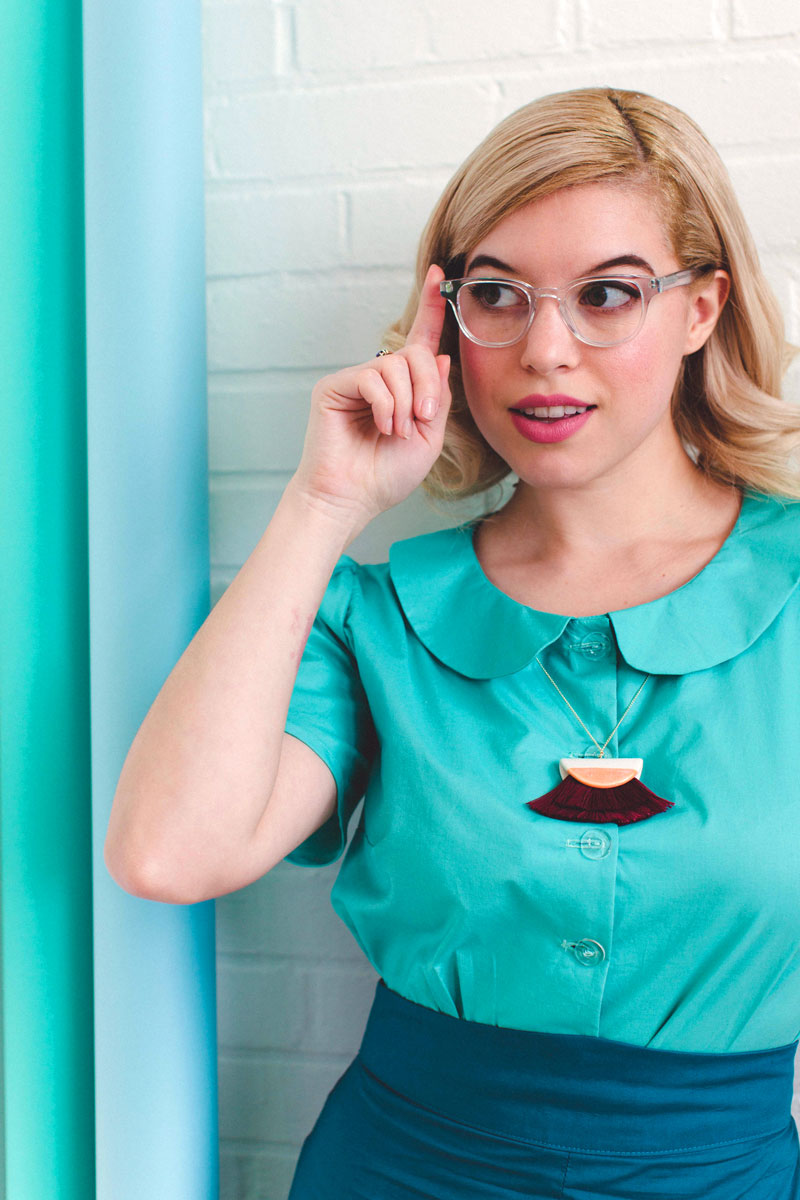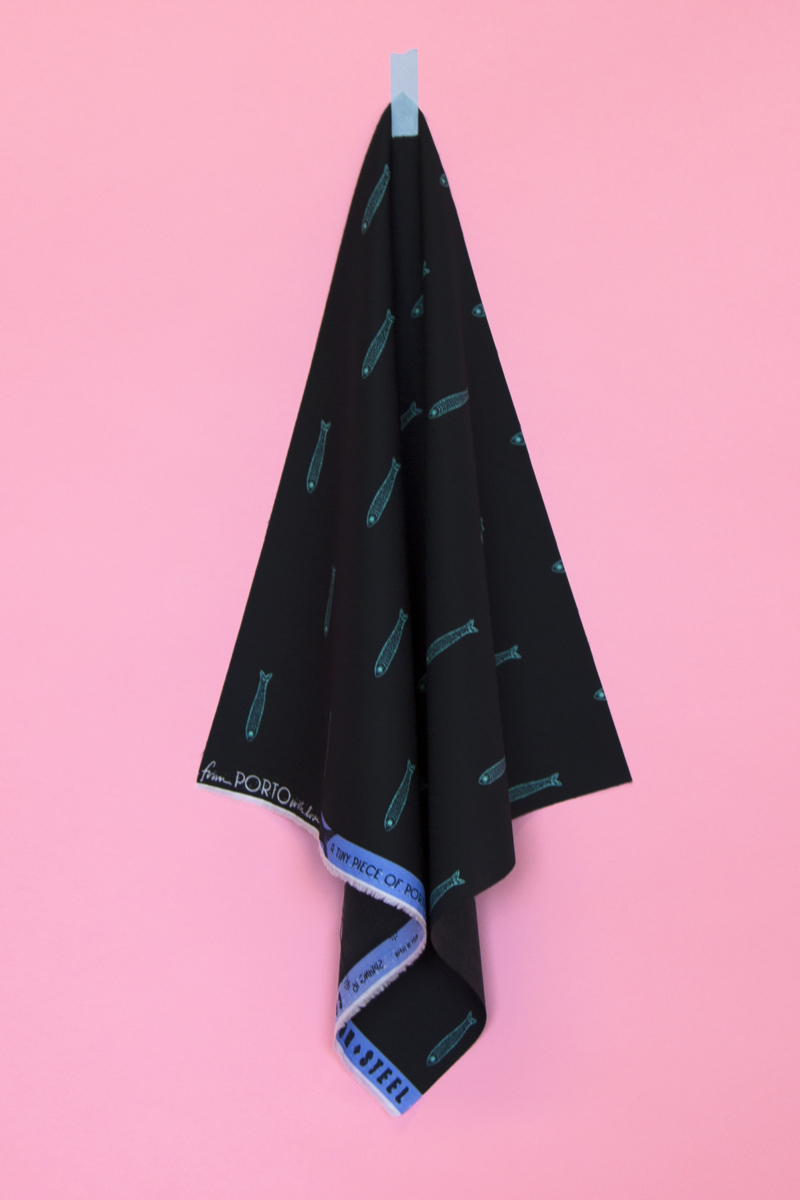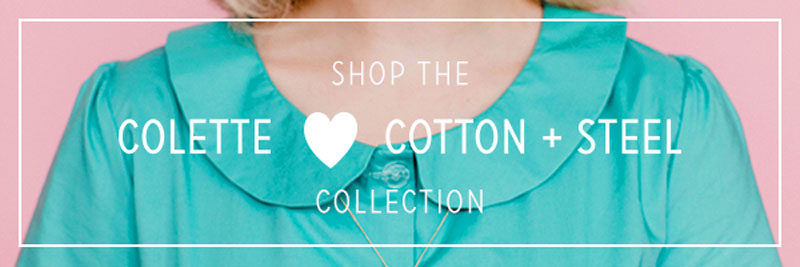Sewing with Cotton Lawn: Colette ♥ Cotton+Steel
Colette is excited to be partnering with our BFF, Cotton+Steel for a fun and informative Substrate series. Devon, who you might recognize from our Sewalongs, will be teaching you all about how these fabrics are made and what’s so great about them over at the Cotton+Steel Blog. On the Colette side of things, we will be sharing our techniques for sewing these fabrics and which patterns work well with them and why.
Today’s featured substrate is cotton lawn.

Cotton Lawn is a lightweight, silky substrate similar to voile or batiste with a bit more structure to it. Cotton+Steel’s lawns are 100% cotton but lawn can be found in other fibers. The threads in the fabric are very fine which results in a supple drape that is perfect for warm weather and linings.
Voile and Lawn sometimes get mixed up. Lawn has a crisper hand and generally has a higher thread count than voile but both fall under the lightweight cotton category. As with most lightweight fabrics, lighter colors such as pink or white, often have have some transparency to them. Despite how light it is, lawn keeps it shape well and resists wrinkles. Yet, there are a couple of tricks that will make your working with lawn experience even more delightful.

Fabric Care:
Lawn doesn’t have noticeable shrinkage, 0-2% in length and 4-6% in width. But, it’s always a good idea to prewash your fabrics before cutting. Cotton Lawn should be machine washed in cold water and tumble dried on the low setting.

This is the amount of shrinkage that occurred on a 5″ square of cotton lawn after washing cold and tumble drying on low.
Pressing:
Lawn is a semi-delicate fabric. Low temperature and a pressing cloth is best.
Cutting:
Lawn is not the slipperiest substrate in Cotton+Steel’s repertoire, yet it is on lighter side. You can use spray starch to help crisp it up and make it easier to work with. Make sure to use a fresh rotary blade when cutting to avoid snags. Pattern weights or fine glass head pins will work best to hold your pattern down.
Marking:
Avoid marking pens, due to the fine threads that make up lawn’s silky texture, ink can burrow itself into the fabric. Instead, try water soluble pencil.
Interfacing:
Fusible sheerweight interfacing works perfectly. The lightweight of lawn does not lend itself to sewn-in or heavy weight interfacings.
Thread:
We recommend 60wt cotton or polyester thread rather than your standard 50wt thread. The lighter thread is a similar weight to the threads that make up cotton lawn and prevent puckering.
Sewing Note: For thread weights, a smaller weight number indicates a heavier thread. The weight of a thread is actually a length measurement. When 50 kilometers of that thread weighs 1 kilogram, it is a 50 weight thread. A 40wt. thread is heavier because it takes only 40 kilometers of thread to weigh one kilogram.
Needle:
You should choose your needle size based on the type and weight of thread that is being used as well as the fabric that is being sewn. Since lawn is a mid-range lightweight fabric, we recommend using the smallest Universal needle, 60/8.
Seam Finish:
Lawn doesn’t fray too much but serging can sometimes cause puckering if your needle is dull or pressure foot pressure is too high. For the best results, use french seams or pinking shears.
Hem:
A rolled hem is perfect hem for lawn fabrics, whether by machine or serger, it’s ideal for managing this flowy fabric.
Suitable For:
Breezy Blouses: Violet and Aster are simple blouses with ample ease and not too much structure. Both of these blouses have button closures that have been stabilized with some tear-away interfacing to help keep the lawn from getting “eaten” by the sewing machine. Zipper closures are fine for lawns too, but a lapped zipper in a lawn may lack the structure needed for a professional finish.
Violet

The gentle loose fit of Violet lends itself to a lighter fabric.
Aster

The crispness of lawn will help you get those perfect pleats on of Aster’s bodice.
Peony

When choosing dress or skirt designs, full Silhouettes are best. Lawn may look “wimpy” if used for a straight shift dress because it lacks natural volume. But, when gathered or pleated in a skirt, the fabric shines and has a very playful, airy feel. Peony‘s gentle a-line and gathering the skirt add volume while the gathered bust allows the lawn smoothly shape the bust.
Linings
As a lining, lawn has a bit more structure than a sateen or a lightweight rayon, which is nice if your shell fabric is already giving you some trouble.Lawn, especially Cotton+Steel’s lawn, comes in some fantastic prints and are a great opportunity to add a bit of flare to your garments. By choosing a fun printed lawn for a lining, you can add little fun and use up those cute prints that you may not have used otherwise.
Constructions Tips:
- Test your tension before sewing because it has a tendency to pucker.
- Lawn has very little stretch in the crossgrain, compared shirtings or chambray. Make sure to compare your body measurements to the finish garment measurements to insure that you’re not relying on any of the fabric stretch for ease.
- Since lawn is very crisp, straight darts may result in “cone-boobs”—try sewing your darts at a slight concave curve to help it form a more gentle shape. Look for garments with princess seams or gathers shaping, if precise darts are something that you haven’t quite yet mastered.
Make sure to hop on over to the Cotton+Steel blog today to learn more about this fabric substrate and their production process.
There’s only a few more days of our Colette ♥ Cotton+Steel sale! From now until July 29th at Midnight, PST, the Colette patterns featured in this collection are 15% off. No promo code needed.

 Sign In
Sign In


Comments
Toni
July 28, 2016 #
Is the skirt featured with the Violet top one of Colette’s patterns as well?
Katie
August 2, 2016 #
Hey Toni! The skirt that is paired with the Violet is the Ginger by Colette Patterns.
Deborah Morrison
July 29, 2016 #
Thank you for a great post. In particular, I had never thought about changing thread weight. I have worked with lawn a lot, because I live in a very hot climate. I knew many of the tips you mention, but had never understood the reasons behind them.
I love the Violet and if anyone is thinking about making one in lawn, do face with bias binding instead of the facing piece the pattern provides, as your facing will show through most lawns. I believe Colette did a tutorial….?
jerilynn
July 29, 2016 #
This tutorial was so informative I really enjoy learning about the substrates you’re featuring. Such good tips covering everything from start to finish, very helpful.
I know feel comfortable and confident in sewing with Lawn fabric to be successful. The dart info. was priceless, who wants cone-boobs.
Thanks again and I look forward to your next substrate review.